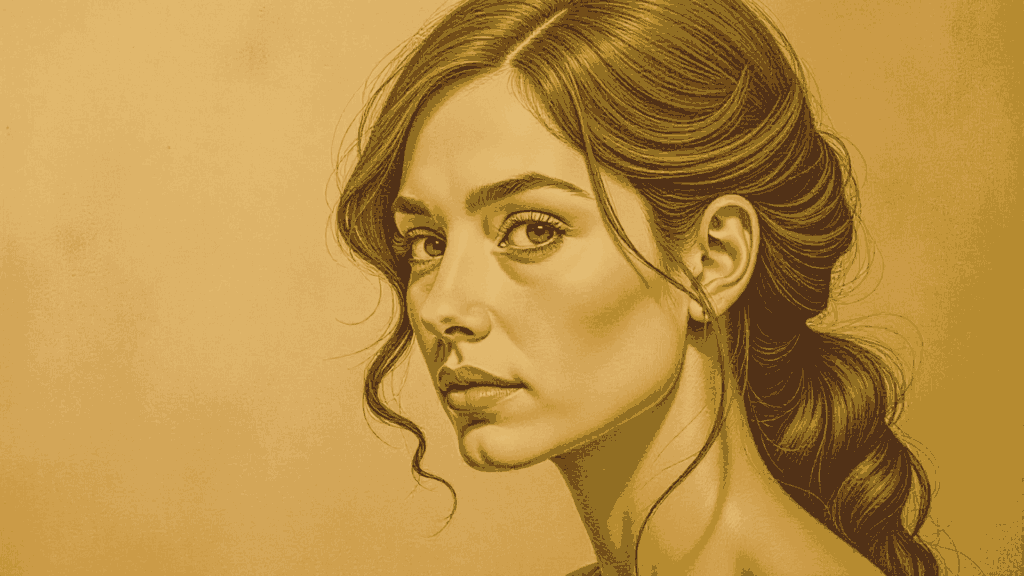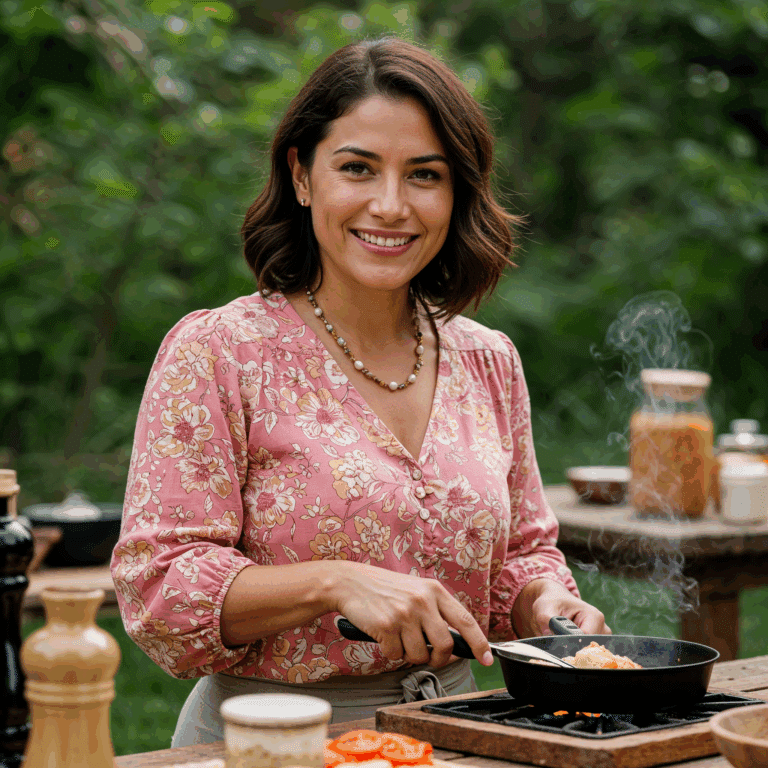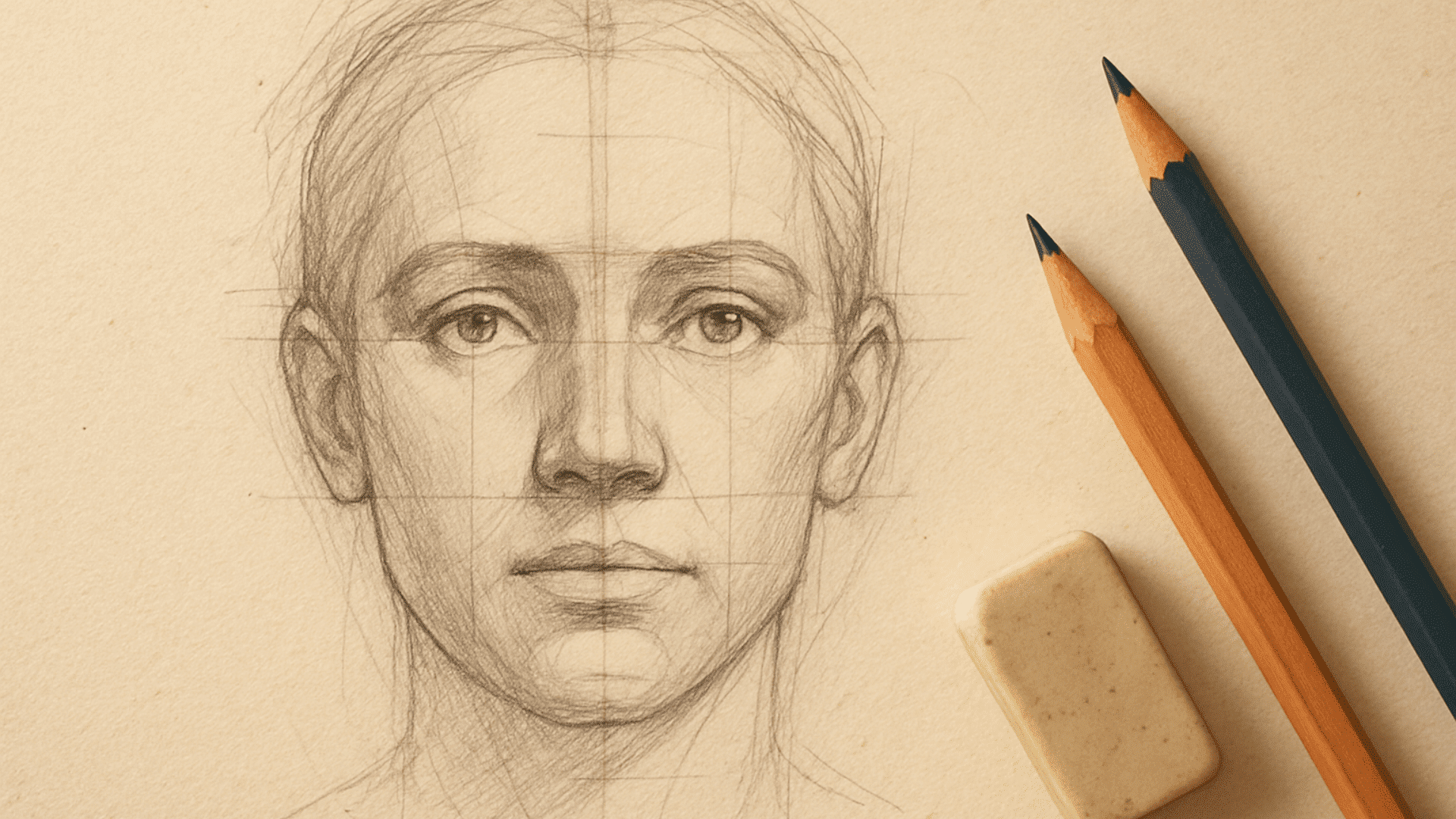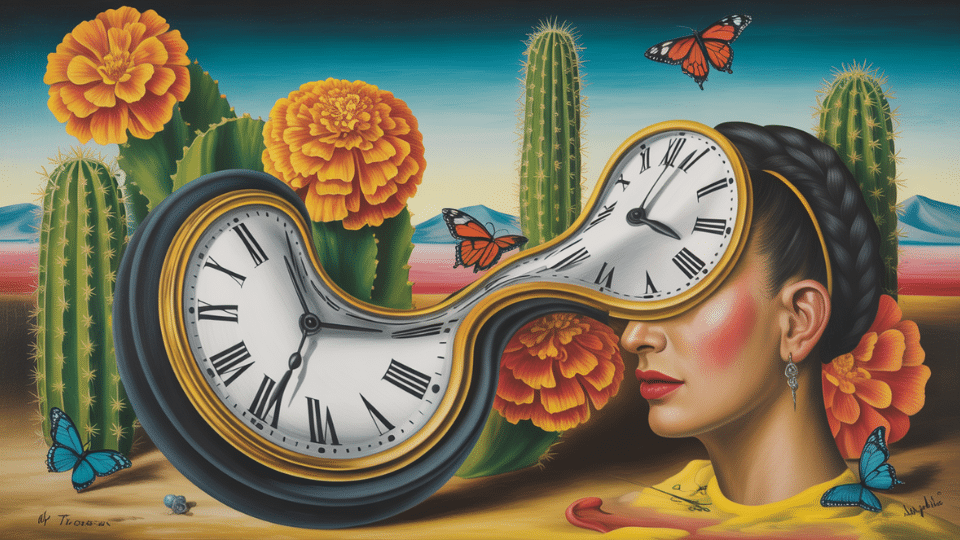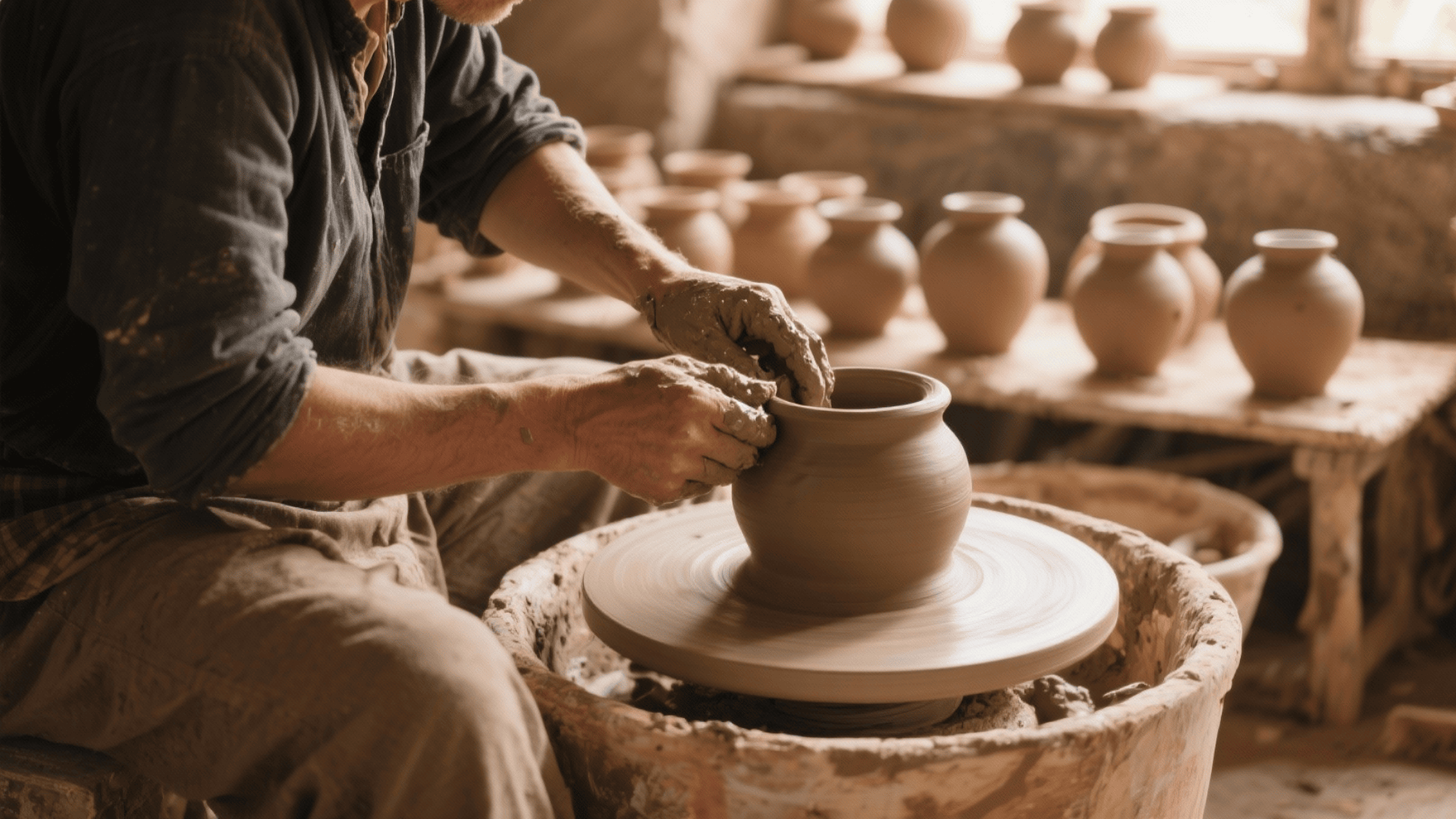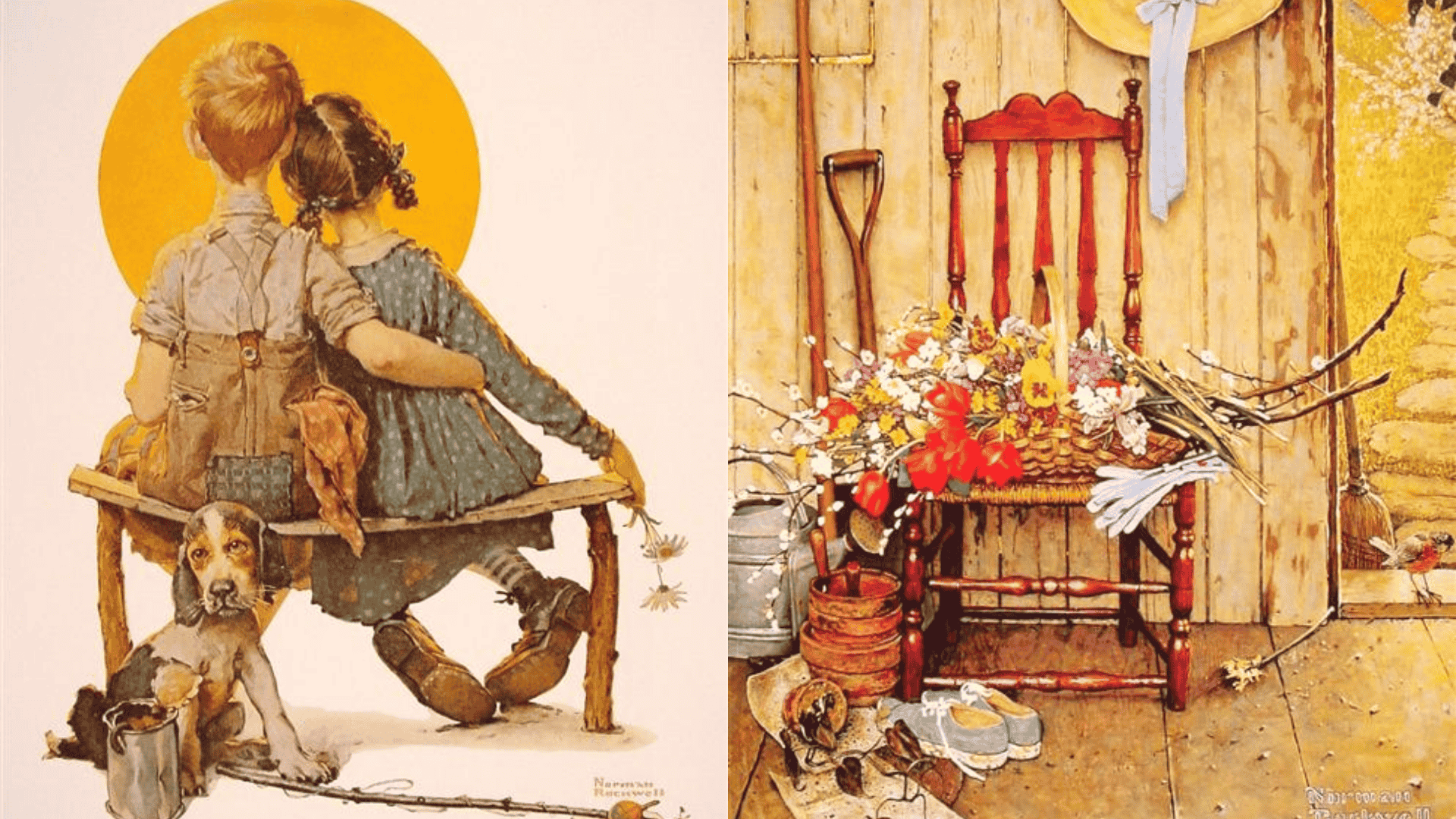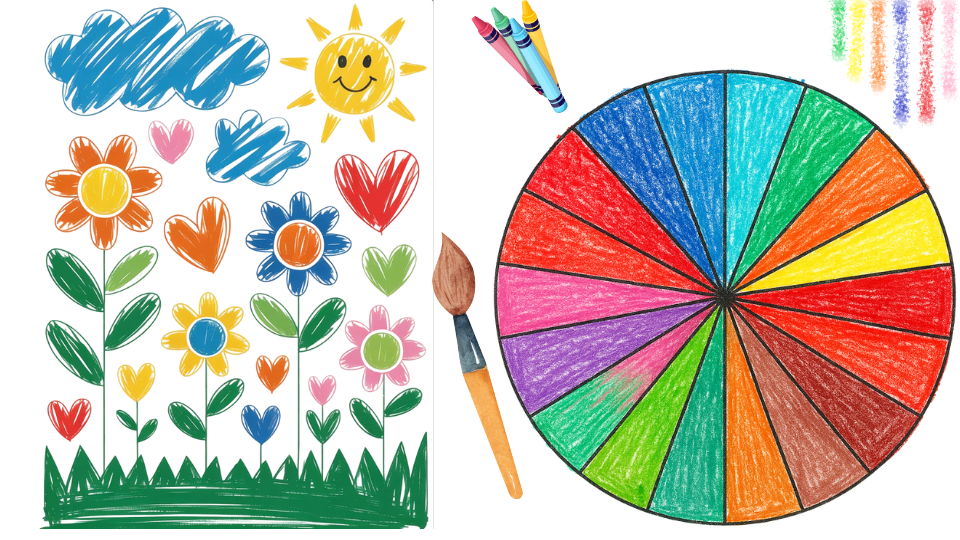Many art lovers are mesmerized when they see how a simple self-portrait can reveal more than just a likeness.
Throughout history, self portrait art has allowed artists to turn the canvas into a mirror of their thoughts, struggles, and ambitions.
Readers who explore these works often find new ways to understand creativity, drawing inspiration from how masters like Dürer, Rembrandt, and Kahlo expressed their identities.
This blog invites the audience to unearth the evolution of self portrait art, learn from iconic examples, and gather practical ideas for creating portraits that carry personal meaning and emotion.
The Key Concept of Self Portraits
A self portrait is an artwork where the artist becomes the subject. What started as a simple practice for honing skills has evolved into a medium for exploring identity, psychology, and self-expression.
The tradition dates back to ancient times, but truly flourished during the Renaissance, when humanism improvised the role of the artist from craftsman to creative genius.
With this shift came a new awareness, and many turned their attention inward.
Reasons Artists Painted Themselves:
- Artistic Exercise: Their own face was a free, accessible model to practice light, shadow, and emotion.
- Personal Statement: Through attire, tools, or confident gazes, artists like Dürer and Rembrandt asserted skill, status, and individuality.
- Symbolic Reflection: Many works go beyond likeness, using abstraction or metaphor to reveal inner thoughts, fears, or evolving identity.
Self-portraits remain both technically brilliant and deeply personal windows into the artist’s world.
Self Portrait Art Inspired by Renaissance and Early Artists
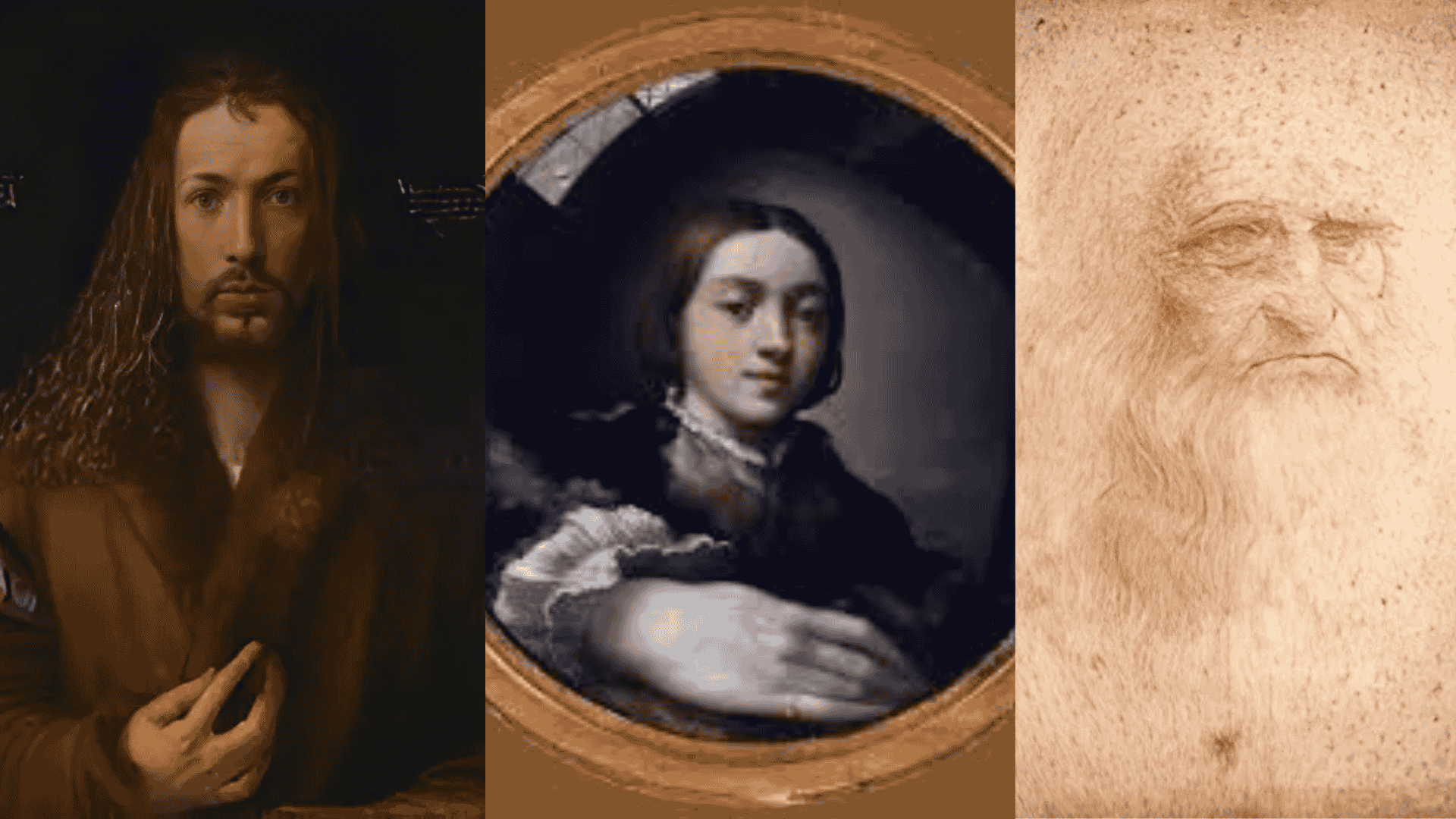
The Renaissance brought a new focus on the individual, and artists began to see themselves not just as craftsmen but as intellectual creators.
1. Albrecht Dürer, Self-Portrait at 28 (1500)
In this striking work, Dürer depicted himself in a pose resembling Christ, employing long hair and a direct gaze to elevate the image of the artist as a near-divine creator. It was a bold statement of self-confidence and artistic power.
Lesson for Your Art: Use pose and expression to project authority. A self-portrait can establish your identity as strongly as your art itself.
2. Leonardo da Vinci, Portrait of a Man in Red Chalk (c. 1512)
Often believed to depict Leonardo himself, this portrait radiates calm reflection.
Using masterful shading and soft contours, Leonardo communicates not just what he looked like but the depth of lifelong learning, wisdom, and inner thoughtfulness.
Lesson for Your Art: Use subtle gaze and detail to suggest intellect or wisdom. A portrait can speak without exaggeration.
3. Parmigianino, Self-Portrait in a Convex Mirror (1524)
Painted on a specially crafted curved surface, Parmigianino’s portrait playfully distorts his own features.
It reflects not realism but innovation, transforming a likeness into a showcase of technical mastery, originality, and a daring spirit outside artistic convention.
Lesson for Your Art: Experiment boldly with perspective or media. Innovation is as memorable as accuracy.
Baroque & Golden Age Inspiring Self Portrait Art
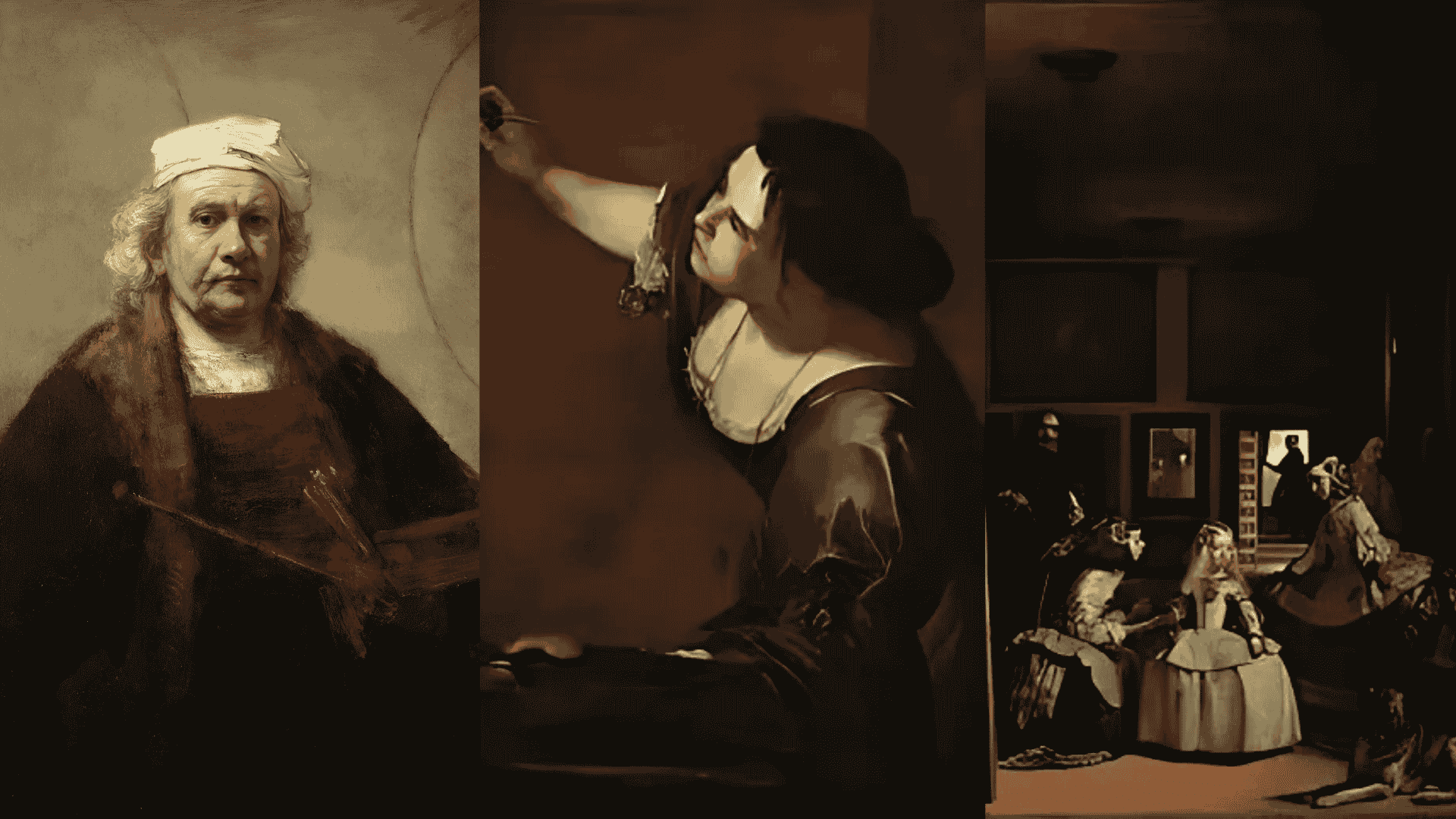
During the Baroque period, self-portraits became more dramatic and introspective, delving into the artist’s psyche and personal struggles.
4. Rembrandt van Rijn, Self-Portrait with Two Circles (c. 1665–1669)
Rembrandt painted over 80 self-portraits during his lifetime, documenting personal and artistic transformations.
In this work, his thick brushwork and somber palette suggest wisdom, strength, and mortality, while the mysterious circles hint at mastery and the cycle of life.
Lesson for Your Art: Create Portraits Across Time. Together, they can narrate your journey as both artist and human being.
5. Artemisia Gentileschi, Self-Portrait as the Allegory of Painting (c. 1638–1639)
Gentileschi defied norms by embodying painting’s spirit, claiming her place in a male-dominated art world. She merged herself with allegory, turning her portrait into a declaration of skill and defiance.
Lesson for Your Art: Use symbolism to claim identity. Your portrait can embody more than a likeness.
6. Diego Velázquez, Las Meninas (1656)
In this masterpiece, Velázquez included himself painting at his easel within a royal scene, suggesting the artist’s uplifted intellectual role.
By positioning himself alongside the Spanish monarchy, he blurred the lines between laborer and court insider.
Lesson for Your Art: Put yourself in context; a self-portrait can express both personal role and social position.
Self Portrait Art in Romanticism and Realism
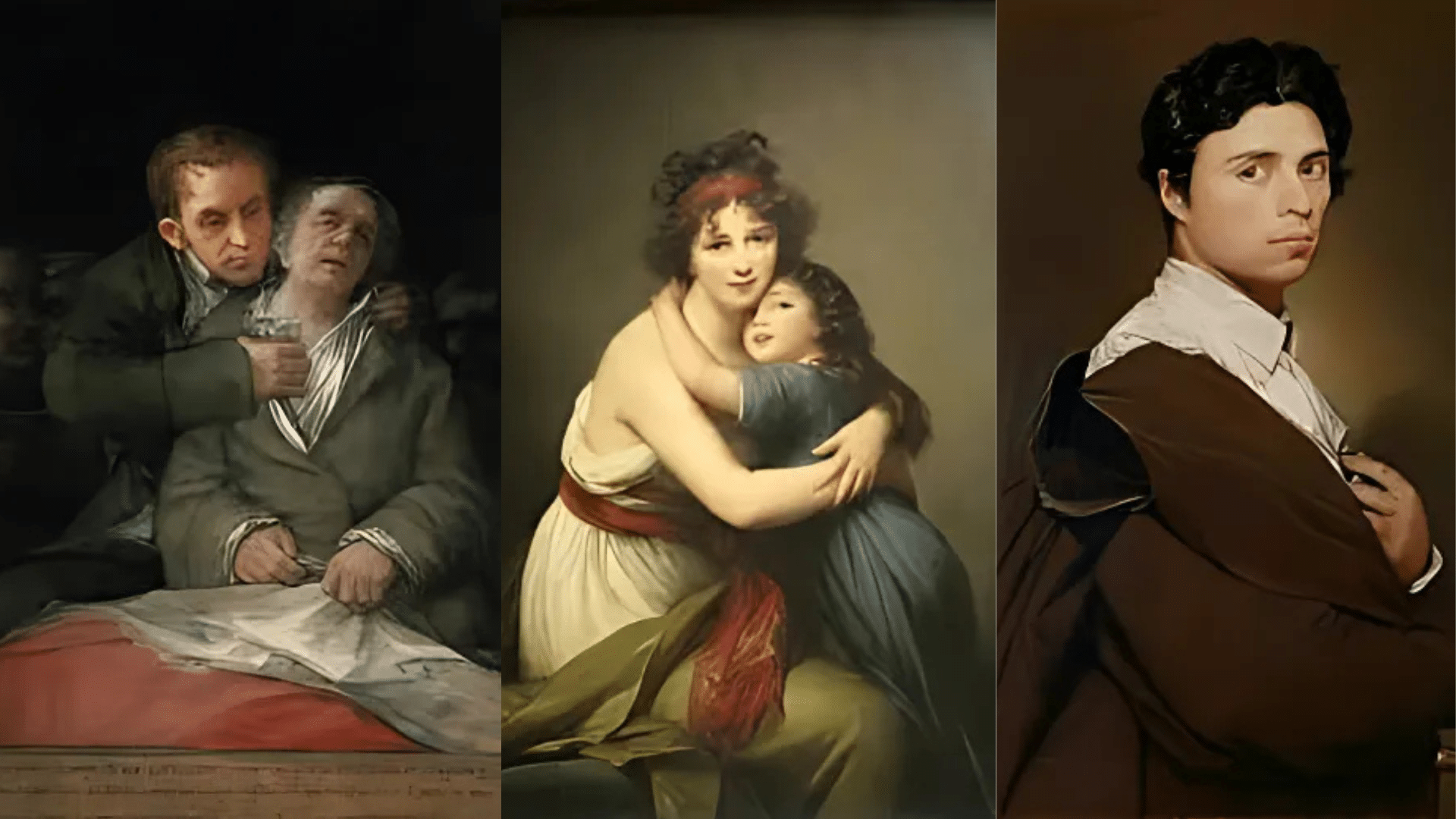
This era saw artists grappling with new ideas about emotion, individuality, and social status, reflected in their more personal self portraits.
7. Élisabeth Vigée Le Brun, Self-Portrait with Daughter (1789)
Le Brun broke with formal conventions by painting herself warmly embracing her daughter.
Instead of formality, she showed intimacy, affection, and humanity, shifting concentration from external appearance to personal life and maternal connection, which was unusual for her era.
Lesson for Your Art: Introduce family or bonds. They reveal authenticity and personal depth in your art.
8. Francisco Goya, Self-Portrait with Doctor Arrieta (1820)
This vulnerable portrait shows Goya weak and bedridden, supported by his doctor during a period of illness.
Stripped of grandeur, it reveals human fragility and gratitude, offering an honest depiction far removed from ego or showmanship.
Lesson for Your Art: Show vulnerability openly. Honest struggle often resonates more deeply than perfection.
9. Jean-Auguste-Dominique Ingres, Self-Portrait at Age 24 (1804)
Ingres painted himself as a serious young artist on the verge of greatness. His gaze, posture, and meticulous style reveal ambition, skill, and determination, an image designed to convey confidence to both peers and patrons.
Lesson for Your Art: Highlight ambition and drive. Use expression and technique to reveal your hunger for growth.
Self Portrait Ideas from Impressionism & Post-Impressionism
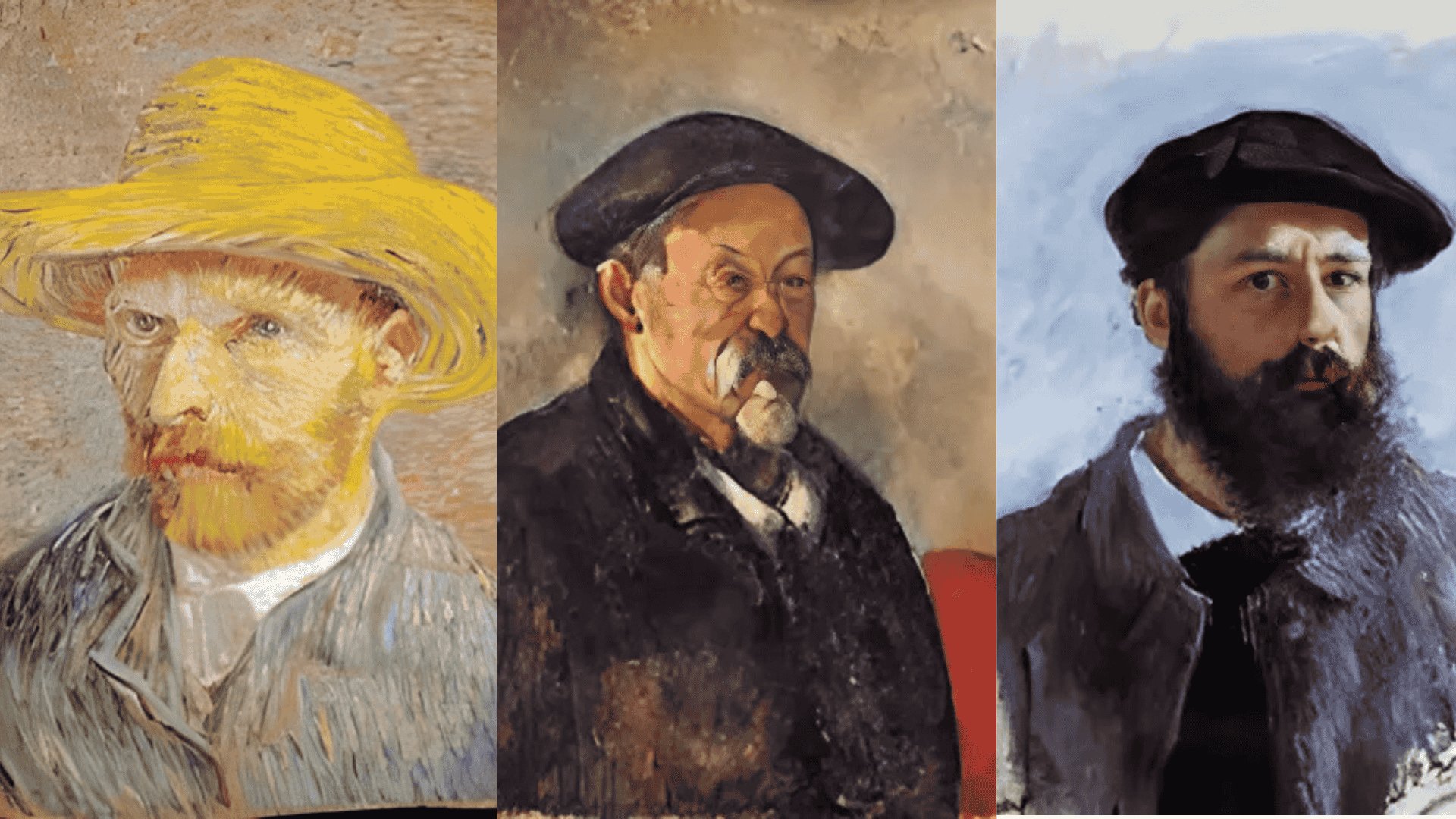
This period ushered in a new era of expressive painting, where artists began to use color and brushwork to convey feeling and psychological depth.
10. Vincent van Gogh, Self-Portrait with Straw Hat (1887)
Van Gogh’s heavy brushstrokes, high-contrast colors, and vivid palette reveal emotional instability and inner conflict. His work is less about accurate anatomy and more about mental state, using art as a release of energy and feeling.
Lesson for Your Art: Let brushwork and color reveal emotion. Feelings can be the subject, not just likeness.
11. Paul Cézanne, Self-Portrait with a Beret (c. 1894)
Cézanne transformed the human face into a structural study by emphasizing planes, geometry, and arrangement, shifting portraits from emotion to form, highlighting the artist’s enduring substance over fleeting expressions.
Lesson for Your Art: Reduce features into shapes and planes. A self-portrait can be a study in structure.
12. Claude Monet, Self-Portrait with a Beret (c. 1886)
Monet rarely painted himself, but here he applied the same atmospheric brushwork used in his landscapes. The airy strokes and effect of light tied his personal image directly to the style for which he was known.
Lesson for Your Art: Use your existing artistic style on yourself. A portrait can act as your creative signature.
Self Portrait Art in Modernism and the 20th Century
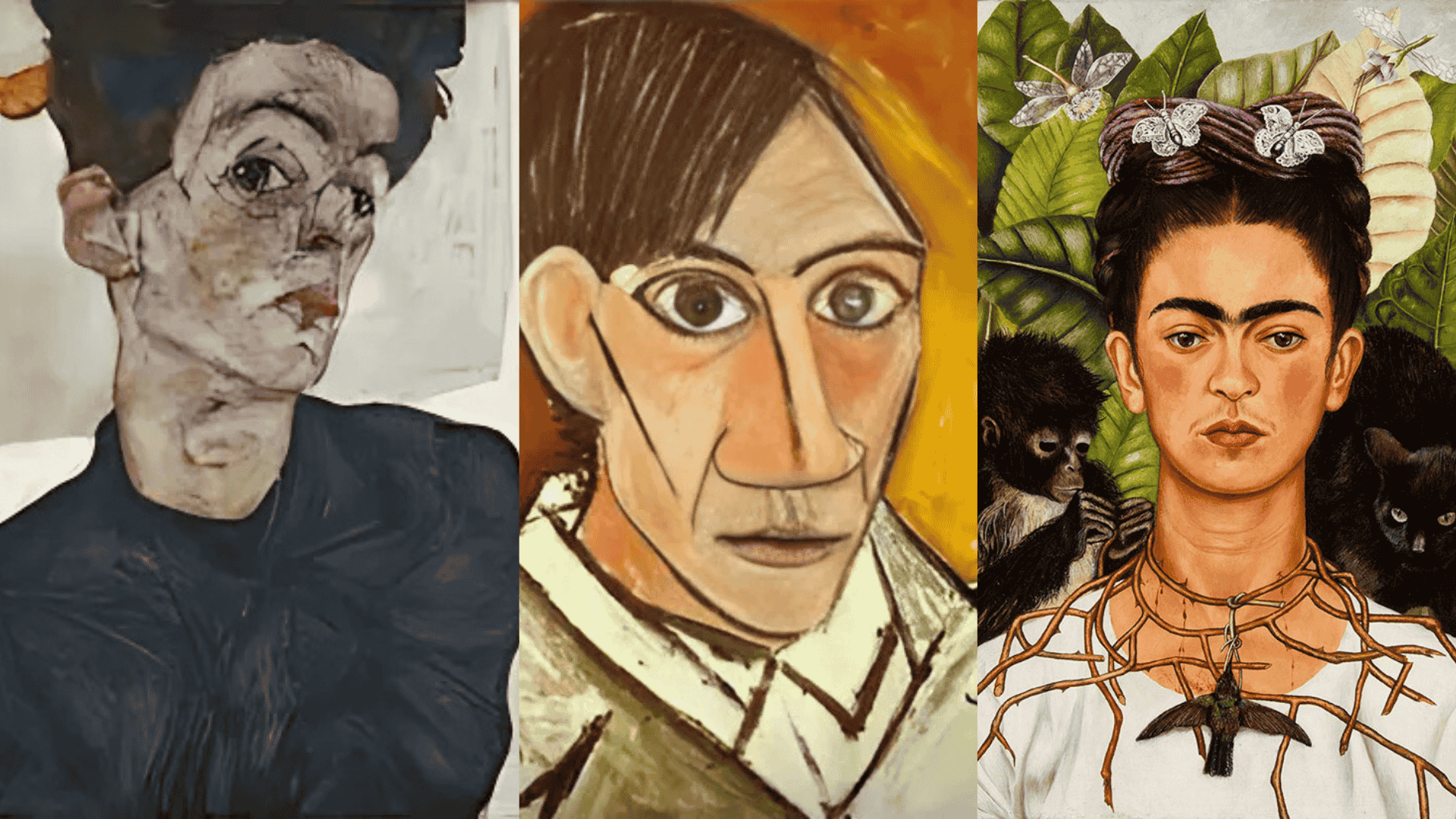
Modernism shattered traditional ideas of representation, allowing self-portraits to become a space for radical experimentation and psychological exploration.
13. Egon Schiele, Self-Portrait with Chinese Lantern Plant (1912)
Schiele’s unsettling image rejects beauty for raw honesty. With harsh lines, angular features, and sickly colors, his portrait exposes psychological intensity, inner conflict, and vulnerability, forcing viewers into his uncomfortable reality.
Lesson for Your Art: Use distortion for truth. Imperfection can reveal deeper emotion than harmony.
14. Pablo Picasso, Self-Portrait (1907)
At a pivotal stage, Picasso stripped his portrait into bold shapes and heavy shadows.
The mask-like face foreshadowed Cubism, using experimentation to challenge traditional representation and hinting at a revolution in style.
Lesson for Your Art: Use your portrait as a creative testing ground. It can preview bold shifts in your art form.
15. Frida Kahlo, Self-Portrait with Thorn Necklace and Hummingbird (1940)
Kahlo surrounded herself with symbols of suffering and cultural thorns pressing into her neck, animals, religious elements, all layered with meaning.
Her art transformed personal pain into a universal narrative, fusing autobiography with cultural pride.
Lesson for Your Art: Surround yourself with meaningful symbols. Objects and imagery can tell your story as powerfully as your face.
Other Self Portrait Inspirations to Try
Now that you have an understanding of how masters approached self-portraiture, here are some ideas to help you get started on your own. Remember, the goal is not just to capture your likeness but to tell a story about who you are.
- Themed Self-Portrait: Pick a theme like growth or strength; use colors, symbols, and objects to show it.
- With Personal Objects: Add meaningful items (books, instruments, collections) for context.
- In a Place of Significance: Choose a meaningful location, studio, home, or nature spot.
- Emotional Self-Portrait: Highlight a feeling with expressions, body language, and colors.
- As a Character/Archetype: Dress as a figure or archetype to explore personality facets.
- Distorted/Abstract: Use unusual colors, shapes, or lines to reflect inner emotions.
- Unusual Perspective: Try views from above, below, or warped reflections.
- Generational: Include family photos or heirlooms to connect with roots.
- Through Light and Shadow: Use dramatic lighting or chiaroscuro for mood.
- Focus on Hands: Show hands in expressive actions like drawing or holding.
- Symbolic: Replace your likeness with animals, objects, or landscapes as metaphors.
Your Story, Your Self-Portrait!
Self portrait art is more than a simple likeness. It is a window into the artist’s soul, capturing ambition, vulnerability, and identity across time.
From Dürer’s assertion of artistic authority to Rembrandt’s raw honesty, Van Gogh’s emotional turbulence, and Kahlo’s symbolic strength, each self-portrait tells a deeply personal story while reflecting the culture of its era.
Exploring different self potrait ideas connects you to this timeless tradition, offering both a technical challenge and an opportunity for self-reflection.
All works in paint, pencil, or mixed media should aim to infuse your piece with meaning beyond its appearance.

